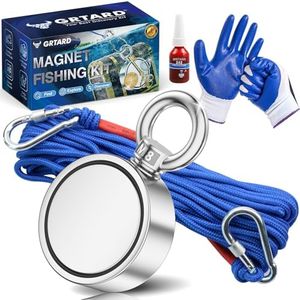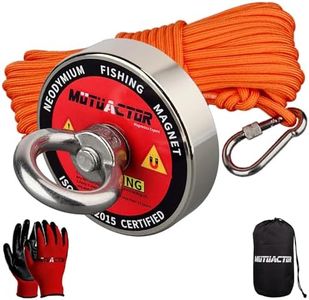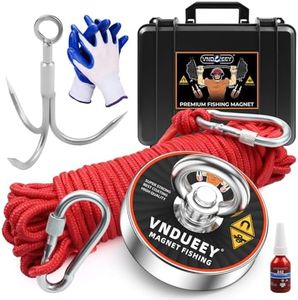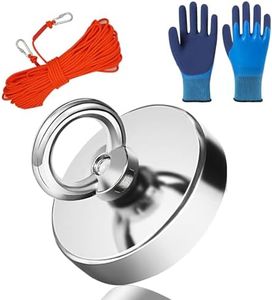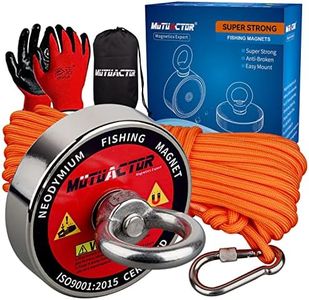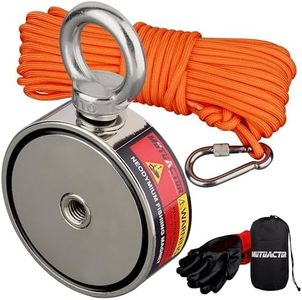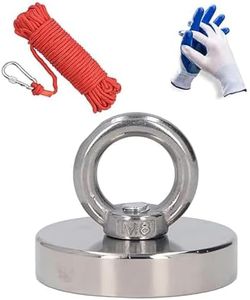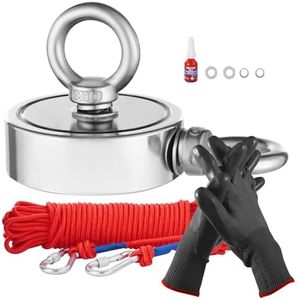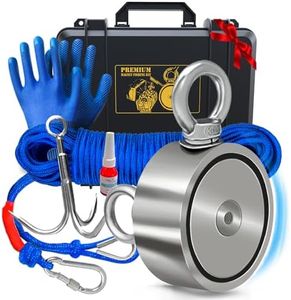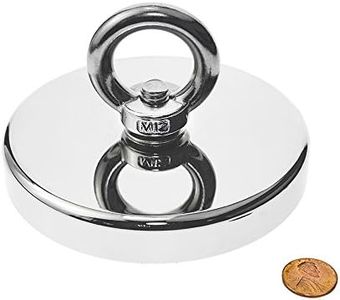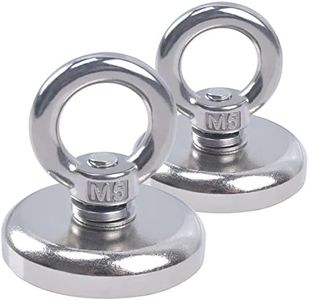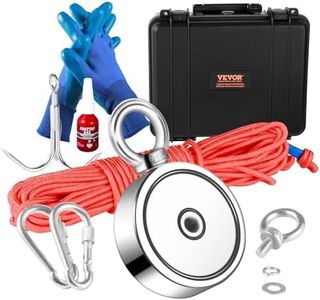We Use CookiesWe use cookies to enhance the security, performance,
functionality and for analytical and promotional activities. By continuing to browse this site you
are agreeing to our privacy policy
10 Best Magnet Fishing Magnet
From leading brands and best sellers available on the web.Buying Guide for the Best Magnet Fishing Magnet
Choosing the right magnet for magnet fishing is all about matching your needs and environment with the magnet’s features. Magnet fishing involves dragging a strong magnet through water to find metal objects, so you need a magnet designed for various conditions. Focus on features that ensure the magnet is powerful, durable, and suitable for your local waters. Understanding the main specifications will help you make a confident choice that suits your style and maximizes your finds.Pulling ForceThe pulling force, sometimes called holding power, tells you how much weight the magnet can retrieve. This is a crucial spec because it directly affects what objects you'll be able to pull from the water. Pulling force typically ranges from around 200 lbs (light objects and less risk of snagging) to over 1200 lbs (heavy, buried, or large finds). If you're just starting, a moderate pulling force (around 400–600 lbs) offers a good balance of strength and ease of use. Go higher if you expect to fish in industrial areas or want to go after larger objects, but remember, the stronger the magnet, the harder it can be to separate from metal and retrieve from snags.
Magnet TypeMost fishing magnets are made from neodymium, which is known for its strong magnetic properties. The grade of neodymium affects the magnet’s strength but is often standardized in commercial magnet fishing products. Just ensure you’re getting something labeled as neodymium, and pay attention to the stated pulling force for your needs.
Coating and Corrosion ResistanceSince your magnet will be submerged in water repeatedly, the coating is essential. Common coatings are nickel-copper-nickel or rubber, both aiming to protect the magnet from rust and damage. A good coating extends your magnet’s life and keeps its power intact. Freshwater magnets might need less heavy-duty coating, while saltwater and muddy conditions demand extra protection. Think about where you’ll fish—saltwater fishers should look for magnets described as 'corrosion-resistant.'
Shape (Single-sided vs Double-sided)Magnets come in single-sided (pulls from one face) or double-sided (pulls from both faces) designs. Single-sided magnets are best for vertical drops off docks or bridges, offering maximum downward pull. Double-sided magnets are versatile for dragging along the bottom and have a better chance of connecting with hidden items. If you like dragging the magnet along the lake or riverbed, double-sided might suit you better, but for depth fishing or vertical use, single-sided could be best.
Size and WeightThe overall size and weight of the magnet impact how easy it is to handle and transport. Larger, heavier magnets tend to be stronger but can be more cumbersome and trickier to pull free when they attach to large objects. If you’re fishing from a kayak or need to travel light, a medium or smaller magnet is ideal. For stationary spots or when searching for big finds, a heavier model may be worth the effort.
Eyebolt Quality and AttachmentThe eyebolt is the piece where you secure your rope. A strong, well-attached eyebolt is crucial for safety and efficiency, preventing the magnet from detaching while in use. Look for durable metal eyebolts with secure threading. If you plan to pull hard or drop the magnet frequently, make sure the attachment is robust and rust-resistant.
